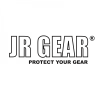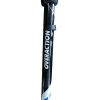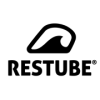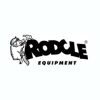Lifespan Of Your Climbing Gear – Part A (Harness, Rope, Slings and Webbing)
02/11/2023

WHEN TO RETIRE YOUR TEXTILE GEAR (HARNESS, SLINGS, ROPES)
Surely the time you have spent on the mountain with your gear has created a special bond between you. Every piece of your equipment has a story to tell, no wonder it's hard to say goodbye... At the same time the cost of replacing your equipment is not negligible. But at some point there will come a time when you have to replace parts of your gear and to determine when that will happen will help you climb safely.

Knowing when to retire your climbing gear isn't always easy. Sometimes you will be able to identify visible damage and know that replacement is necessary. Other times you won't be able to see anything wrong with your gear, but it might be time to put it away. It is necessary to always carefully check your equipment for damage, while also following the manufacturer's instructions regarding the lifespan of a product. And when in doubt, you can always retire it by finding some other use.
Important: When you retire equipment that you consider unsuitable, you must ensure that you or someone else will not use it for climbing again. It is important to clearly mark the gear that has been withdrawn (by putting a distinctive mark on it) or destroy it by cutting it (eg rope or slings). We don't throw away our gear on the mountain because someone might find it and use it!
Let's now look at the individual pieces of equipment divided into categories and see how we check them and when we should retire them.
Categories of Climbing Gear
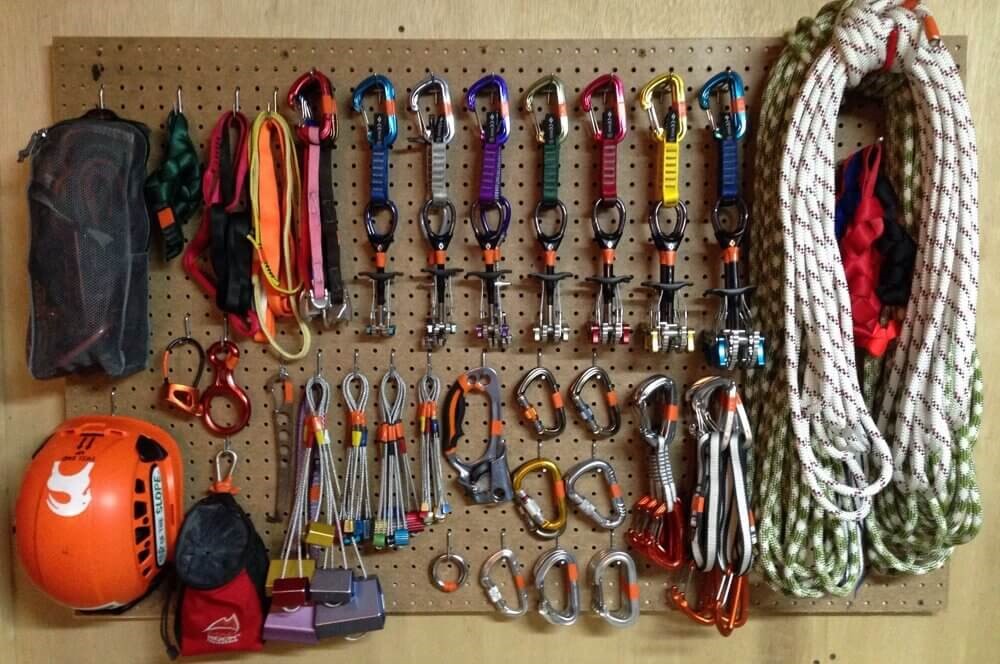
In general, we can divide our equipment into metal parts (carabiners, quickdraws, nuts, friends), and textile equipment (harness, rope, and webbings). Finally, we also give great importance to our helmet, for which we have written in another text (https://www.cdc.gr/our-blog/climbing-helmets-clone/ ).
In this text we will deal with the textile equipment, i.e. the harnesses, the slings and webbings and ropes.
When do we retire a harness (https://www.cdc.gr/climbing/harnesses/)
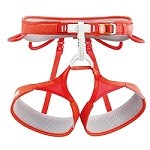
We immediately retire a harness if we find severe wear or tears on it, unless the wear is on the foot pads or the rings from which we hang our equipment.
If the belt that goes around our waist, or the metal parts that secure the belt, or the central fabric loops from which we are tied or belay shows wear that makes you question whether it is safe to hang, then it is better to withdraw your harness. The climbing harness must be 100% safe and not make you feel unease. In addition, we must take into account that even a small tear can be fatal in a big fall that can happen at any time. Even if you are climbing top rope and not lead climbing, your harness is important to the safety of your rope partner when belaying them. Therefore we do not take unnecessary risks thus protecting ourselves and others.
How to inspect your harness
Below we show some indicative examples of the wear of a harness:
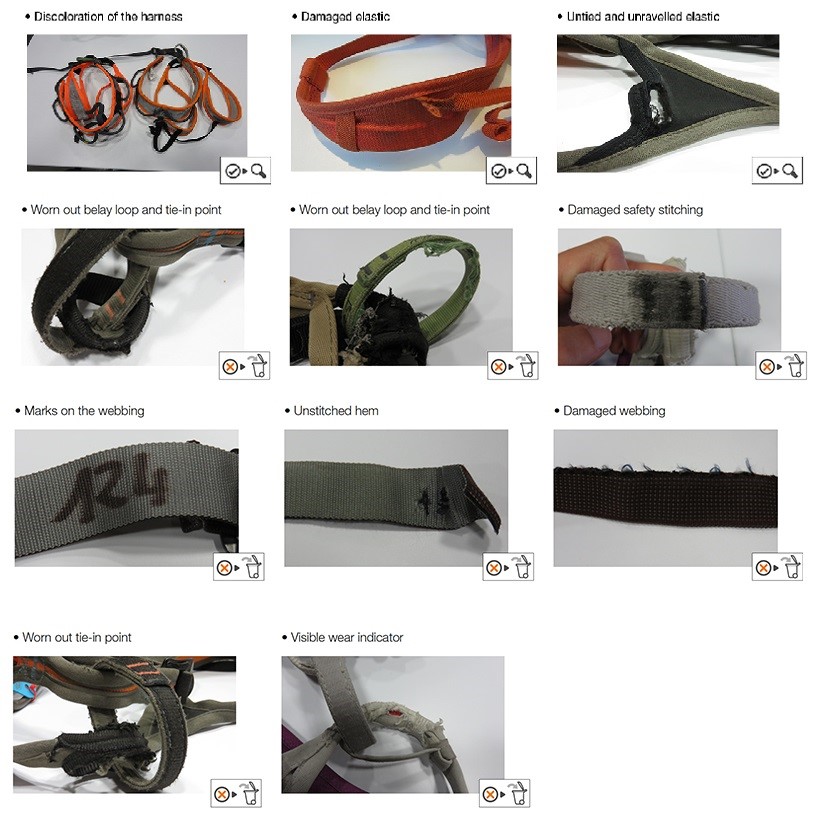
Moreover, manufacturers give indications of the lifespan of your climbing harness based on either the years after the date of manufacture or the years after first use.
Below we see a table with the life span of harnesses given by the various manufacturers:
|
Brand |
Maximum years after manufacturing |
Maximum Years After First Use |
Warranty (Years) |
|
Black Diamond |
10 |
5 |
1 |
|
Simond |
10 |
5 |
2 |
|
Wild Country |
10 |
5 |
2 |
|
Mammut |
10 |
7 |
2 |
|
AustriAlpin |
10 |
– |
? |
|
C.A.M.P. |
10 |
– |
3 |
|
DMM |
10 |
– |
3 |
|
KONG |
10 |
– |
2(?) |
|
Ocun |
10 |
– |
2 |
|
Petzl |
10 |
– |
3 |
|
Climbing Technology |
12 |
10 |
3 |
|
Edelrid |
12 |
10 |
3 |
|
Beal |
15 |
10 |
3 |
|
Edelweiss |
15 |
10 |
2 |
|
Rock Empire |
15 |
10 |
2 |
|
Singing Rock |
15 |
10 |
3 |
But just as important, if not more so, are the storage conditions and frequency of use of your climbing harness!
In general, even if properly stored, it is a good idea to retire a harness after 7 years. We don't need to push our equipment to its limits. Additionally, if you are a mountain guide or frequent climber, some recommend replacing your harness after 1-2 years. Keep in mind that exposure of the harness to sun, moisture and extreme weather conditions (extreme cold or heat) dramatically reduces its durability, and of course, heavy falls!
Apart from the lifespan given by the manufacturer, it is important to visually check our harness every time before use. Indicatively, we look for any of the following signs:
- Strong discoloration (either from friction or from sunlight)
- Dried/petrified fabric
- Seam wear
- Worn out belay loop and tie-in point
- Damaged buckles
- Visible wear on any vital part (cut, torn fabric)
If we spot any of the above signs, it's time to replace our harness!
When to retire a climbing rope (https://www.cdc.gr/climbing/ropes/)
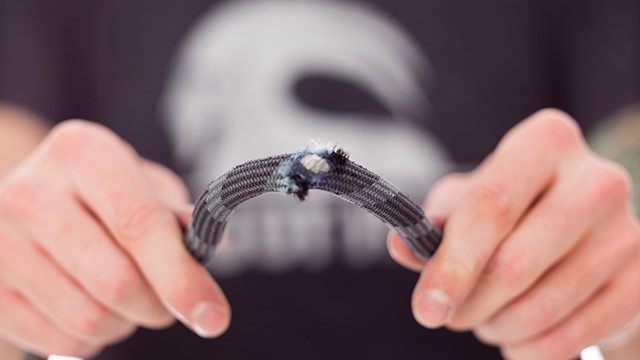
Immediately retire a climbing rope if it has been involved in a massive drop with extreme loads or shows damage such as cuts, flat spots, dryness and/or stiffness.
Even a rope that shows no visible signs of damage must eventually be retired at some point. Here are some rough guidelines:
- After a fall with extreme loads or other damage: immediately
- Frequent use (weekly): 1 year or earlier
- Regular use (a few times a month): 1–3 years
- Occasional use (once a month): 4–5 years
- Infrequent use (1–2 times a year): 7 years
- If never used: 10 years
Important: Keep a log of rope use: Recording the date of purchase, frequency of use, and the number and severity of falls in a journal will help you determine exactly when it's time to retire a rope.
How to inspect your climbing rope
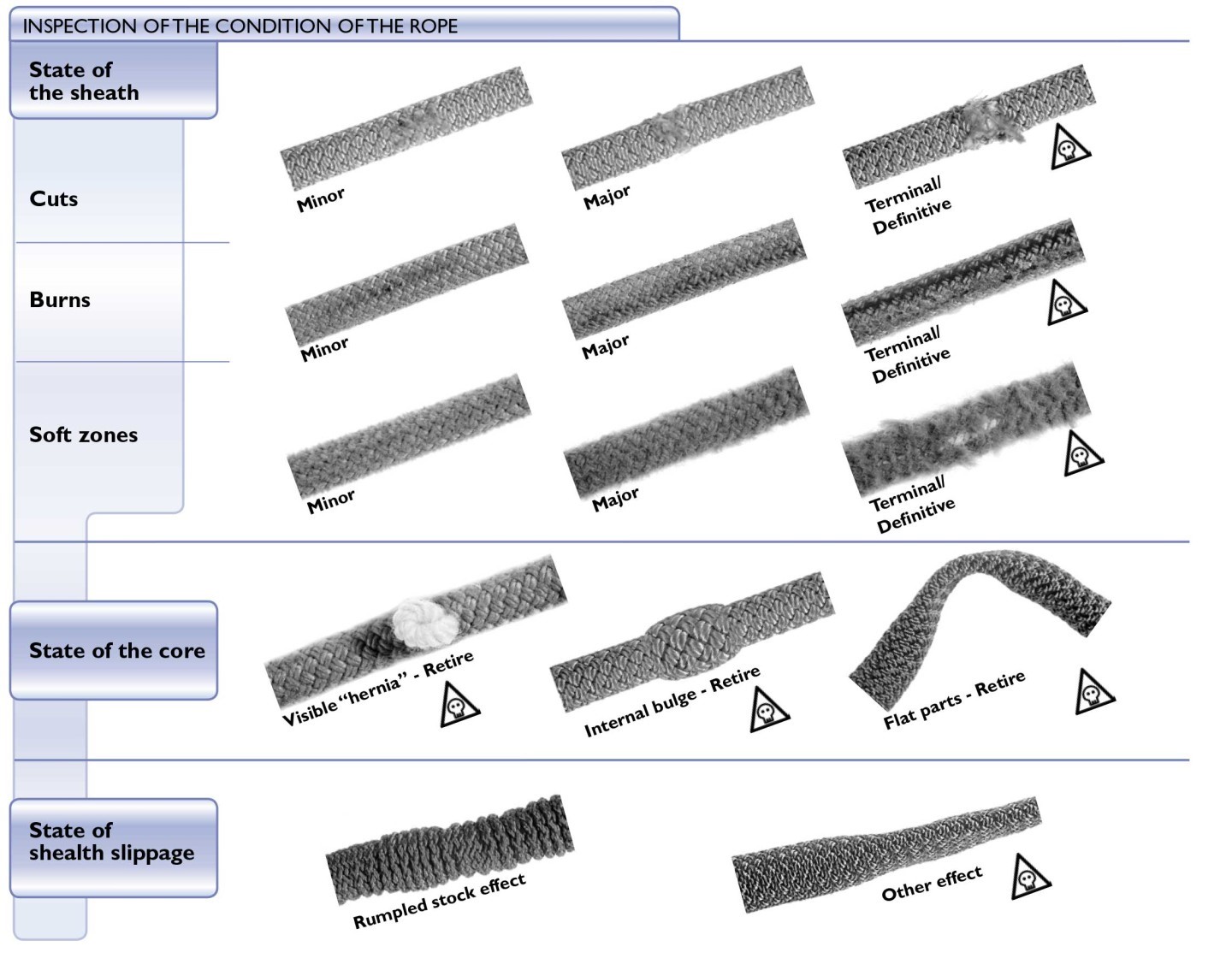
In order to know the condition of your rope, it is important to inspect it before each climbing trip. Do this by running every inch of the rope through your fingers to see and feel for any damage.
Do these checks while inspecting your rope:
- Are there extremely fuzzy areas?
- Do you see or feel cuts?
- Do you see or feel flat spots?
- Does the rope feel stiff?
- Can you see the core?
- Are you seeing discoloration from exposure to the sun and/or chemicals?
If the answer to even one of the above questions is "yes" then it's time to retire your rope and replace it with a new one!
When to Retire Climbing Slings, Webbing and Cord
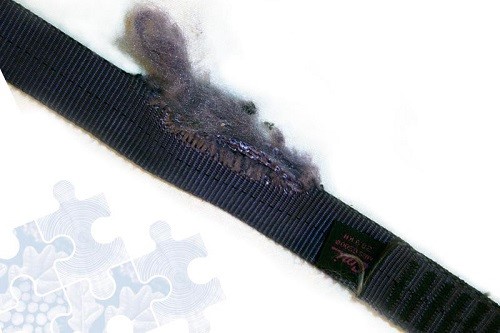
In order to know the condition of your rope, it is important to inspect it before each climbing trip. Do this by running every inch of the rope through your fingers to see and feel for any damage.
Do these checks while inspecting your rope:
- Are there extremely fuzzy areas?
- Do you see or feel cuts?
- Do you see or feel flat spots?
- Does the rope feel stiff?
- Can you see the core?
- Are you seeing discoloration from exposure to the sun and/or chemicals?
If the answer to even one of the above questions is "yes" then it's time to retire your rope and replace it with a new one!
When to Retire Climbing Slings, Webbing and Cord
In general, textile equipment (ropes, slings, harnesses) needs careful treatment, storage and maintenance. We are careful not to pour oils, chemicals, corrosives and unsuitable cleaners onto our equipment. We wash only with water or with special cleaners and brushes available in the market. (https://www.cdc.gr/climbing/maintenance-and-cleaning-of-equipment/)
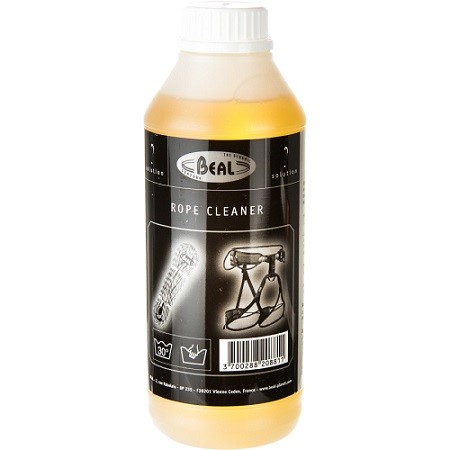
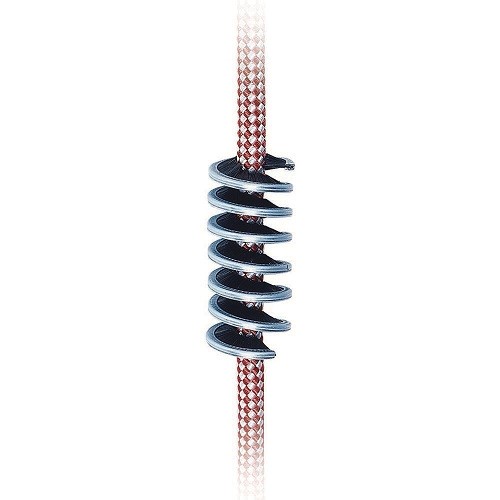
We also make sure to store our equipment in a cool, dry and shady place, away from UV radiation and moisture.
Conclusions
Climbing/mountaineering is a unique and wonderful sport as long as we respect all the safety rules. Part of this is the proper inspection and proper maintenance of our equipment. There are always unpredictable factors and risks in outdoor sports, but the inspection and care of our equipment is entirely our responsibility. Let's do it right to minimize these risks! Proper information and foresight can save lives!
Sources:
Recent posts
-
20/03/2024Guide for crampons
-
19/02/2024Hangboarding for beginners
-
06/02/2024Rock Climbing in Occupational Therapy
-
23/11/2023Climbing Grades
-
22/11/2023Climbing in psychotherapy
-
16/11/2023What is Bouldering
-
15/11/2023Winter Tents
-
15/11/2023Trad VS Sport Climbing
-
07/11/20233 Season Tents
-
03/11/2023Summer Tents
-
02/11/2023Lifespan Of Your Climbing Gear – Part A (Harness, Rope, Slings and Webbing)
-
02/11/2023Lifespan Of Your Climbing Gear – Part B Metal Components
-
30/10/2023What Is “Softshell”?
-
30/10/2023Our Blog
-
30/10/2023Climbing Helmets
-
30/10/2023Base Layers
-
30/10/2023Sleeping Mats
-
30/10/2023Sleeping Bags
-
30/10/2023Waterproof Membranes
-
30/10/2023Mountaineering - Hiking Boots
-
30/10/2023Slacklining, ένας εναλλακτικός τρόπος γυμναστικής.
-
30/10/2023THE LOG BOOK
-
30/10/2023Nikwax secrets of waterproofing
-
30/10/2023INFLATABLE MATTRESS SLEEP
-
30/10/2023Ice axe
-
30/10/2023ΙNFORMATION FOR CRAMPONS
-
30/10/2023Superlight Tents
-
30/10/2023Washing and maintenance of the sleeping bag
-
30/10/2023Climbing Shoes - Quick Buying Guide
-
30/10/2023Nail Vernis Aquaglutene - Vade Retro
-
30/10/2023Mountain cookware


































































